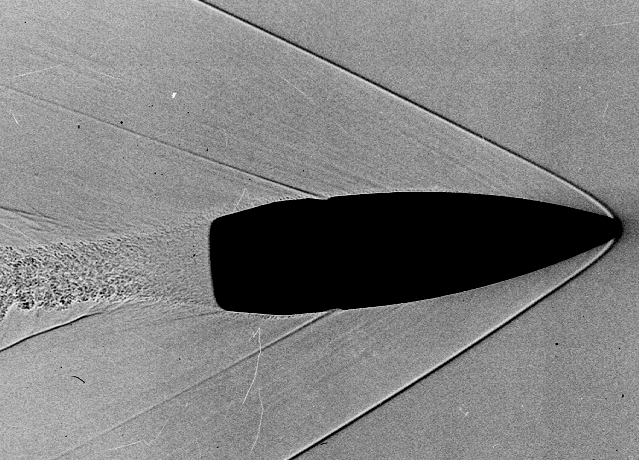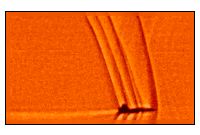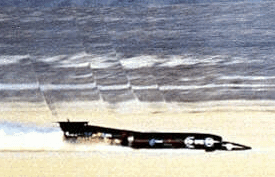The sudden change in pitch of a car horn as a car passes by (source motion) or in the pitch of a boom box on the sidewalk as you drive by in your car (observer motion) was first explained in 1842 by Christian Doppler. His Doppler Effect is the shift in frequency and wavelength of waves which results from a source moving with respect to the medium, a receiver moving with respect to the medium, or even a moving medium.
The perceived frequency (f ´) is related to the actual frequency (f0) and the relative speeds of the source (vs), observer (vo), and the speed (v) of waves in the medium by

The choice of using the plus (+) or minus (-) sign is made according to the convention that if the source and observer are moving towards each other the perceived frequency (f ´) is higher than the actual frequency (f0). Likewise, if the source and observer are moving away from each other the perceived frequency (f ´) is lower than the actual frequency (f0).
Although first discovered for sound waves, the Doppler effect holds true for all types of waves including light (and other electromagnetic waves). The Doppler effect for light waves is usually described in terms of colors rather than frequency. A red shift occurs when the source and observer are moving away from eachother, and a blue shift occurs when the source and observer are moving towards eachother. The red shift of light from remote galaxies is proof that the universe is expanding.
The animations below will illustrate this phenomena for a moving source and stationary observer.
Stationary Sound Source
 |
The movie at left shows a stationary sound source. Sound waves are produced at a constant frequencyf0, and the wavefronts propagate symmetrically away from the source at a constant speedv, which is the speed of sound in the medium. The distance between wavefronts is the wavelength. All observers will hear the same frequency, which will be equal to the actual frequency of the source. For a movie showing how circular waves can be created (in terms of particle motion and wave motion) go here. |
Source moving with vsource < vsound ( Mach 0.7 )
 |
In the movie at left the same sound source is radiating sound waves at a constant frequency in the same medium. However, now the sound source is moving to the right with a speedvs= 0.7v(Mach 0.7). The wavefronts are produced with the same frequency as before. However, since the source is moving, the center of each new wavefront is now slightly displaced to the right. As a result, the wavefronts begin to bunch up on the right side (in front of) and spread further apart on the left side (behind) of the source. An observer in front of the source will hear a higher frequencyf´ >f0, and an observer behind the source will hear a lower frequencyf´ <f0. |
Source moving with vsource = vsound ( Mach 1 - breaking the sound barrier )
Source moving with vsource > vsound (Mach 1.4 - supersonic)
|
This picture shows a sonic boom created by the THRUST SSC team car as it broke the land speed record (and also broke the sound barrier on land). Click on the image to download a larger version of the image. |
Other important applications of the Doppler Effect:
- Doppler Radar uses the doppler effect for electromagetic waves to predict the weather.
- The Doppler shift for light is used to help astronomers discover new planets and binary stars.
- Echocardiography - a medical test using ultrasound and Doppler techniques to visualize the structure of the heart.
- Radio Direction Finding Systems
- There is also an instrumental rock group called The Doppler Effect
(From Acoustics and Vibration Animations - Dan Russell, Kettering University)










